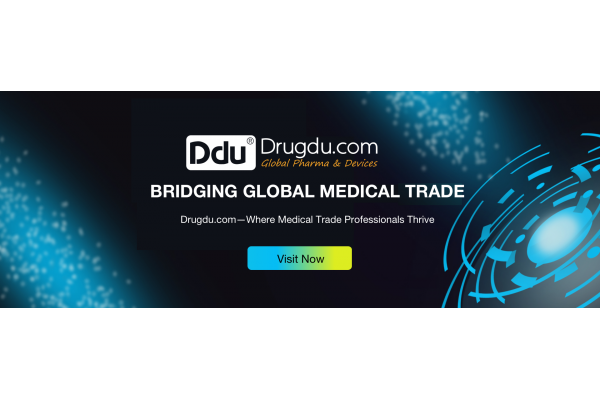【EXPERT Q&A】How to optimize the process of pharmaceutical trade?
June 27, 2025
Source: drugdu
 199
199
Drugdu.com expert's response:
Optimizing the pharmaceutical trade process is a crucial measure to enhance the efficiency of the pharmaceutical supply chain, reduce costs, and ensure the quality and safety of pharmaceutical products. Below are some specific optimization strategies:
I. Digital and Information Technology Upgrading
Implement ERP Systems:
Functions: Integrate modules such as procurement, inventory, sales, and finance to achieve real-time data sharing and process automation.
Advantages: Improve data processing efficiency, reduce human errors, and enhance decision-making support capabilities.
Apply Blockchain Technology:
Functions: Ensure the traceability of pharmaceutical products from production to sale, recording information at every stage.
Advantages: Enhance pharmaceutical safety, boost consumer trust, and facilitate regulatory oversight.
Utilize Big Data Analytics:
Functions: Analyze data on market demand, sales trends, inventory levels, etc.
Advantages: Optimize procurement plans, reduce inventory backlogs, and improve capital turnover rates.
II. Supply Chain Collaboration and Integration
Establish Strategic Partnerships:
Methods: Form long-term and stable cooperative relationships with suppliers, distributors, logistics providers, etc.
Advantages: Ensure the stability of pharmaceutical supply, reduce procurement costs, and improve logistics efficiency.
Optimize Inventory Management:
Methods: Adopt advanced inventory management techniques, such as Just-In-Time (JIT) production and Vendor Managed Inventory (VMI).
Advantages: Reduce inventory backlogs, lower inventory costs, and improve capital utilization.
Strengthen Logistics and Distribution Management:
Measures: Select reliable logistics partners, optimize delivery routes, and enhance delivery efficiency.
Advantages: Ensure timely and accurate delivery of pharmaceutical products to customers, enhancing customer satisfaction.
III. Compliance and Risk Management
Establish a Compliance System:
Contents: Develop comprehensive compliance policies and procedures to ensure that trade activities comply with domestic and international laws and regulations.
Advantages: Reduce legal risks, avoid economic losses and reputational damage caused by compliance issues.
Strengthen Risk Management:
Measures: Identify, assess, and control potential risks in the supply chain, such as supplier risks, logistics risks, and market risks.
Advantages: Improve the resilience and risk resistance of the supply chain, ensuring the smooth progress of trade activities.
IV. Customer Service and Experience Optimization
Enhance Customer Service Levels:
Measures: Establish a professional customer service team to provide timely and accurate consultations and after-sales services.
Advantages: Increase customer satisfaction and loyalty, promoting business growth.
Provide Personalized Services:
Methods: Offer customized product and service solutions based on customer needs.
Advantages: Meet customers' personalized needs and enhance their experience.
V.Continuous Improvement and Innovation
Regular Evaluation and Optimization:
Measures: Regularly evaluate and analyze the trade process, identifying and addressing issues promptly.
Advantages: Maintain continuous optimization and improvement of the process, enhancing overall operational efficiency.
Encourage Innovation:
Methods: Encourage employees to propose innovative ideas and suggestions to drive process and technological innovation.
Advantages: Enhance the company's competitiveness and market position, achieving sustainable development.

Read more on
- 【EXPERT Q&A】What are the requirements for quality management in medical device production? January 7, 2026
- 【EXPERT Q&A】What are the requirements for the production of Class I medical devices? January 5, 2026
- 【EXPERT Q&A】What qualifications does a medical device company need to obtain? January 2, 2026
- 【EXPERT Q&A】What Do Class I, II, and III Medical Devices Specifically Refer to in the Classification of Medical Devices? What Are the Classification Bases? December 31, 2025
- 【EXPERT Q&A】What are the main testing standards for medical devices? December 29, 2025
your submission has already been received.
OK
Subscribe
Please enter a valid Email address!
Submit
The most relevant industry news & insight will be sent to you every two weeks.



